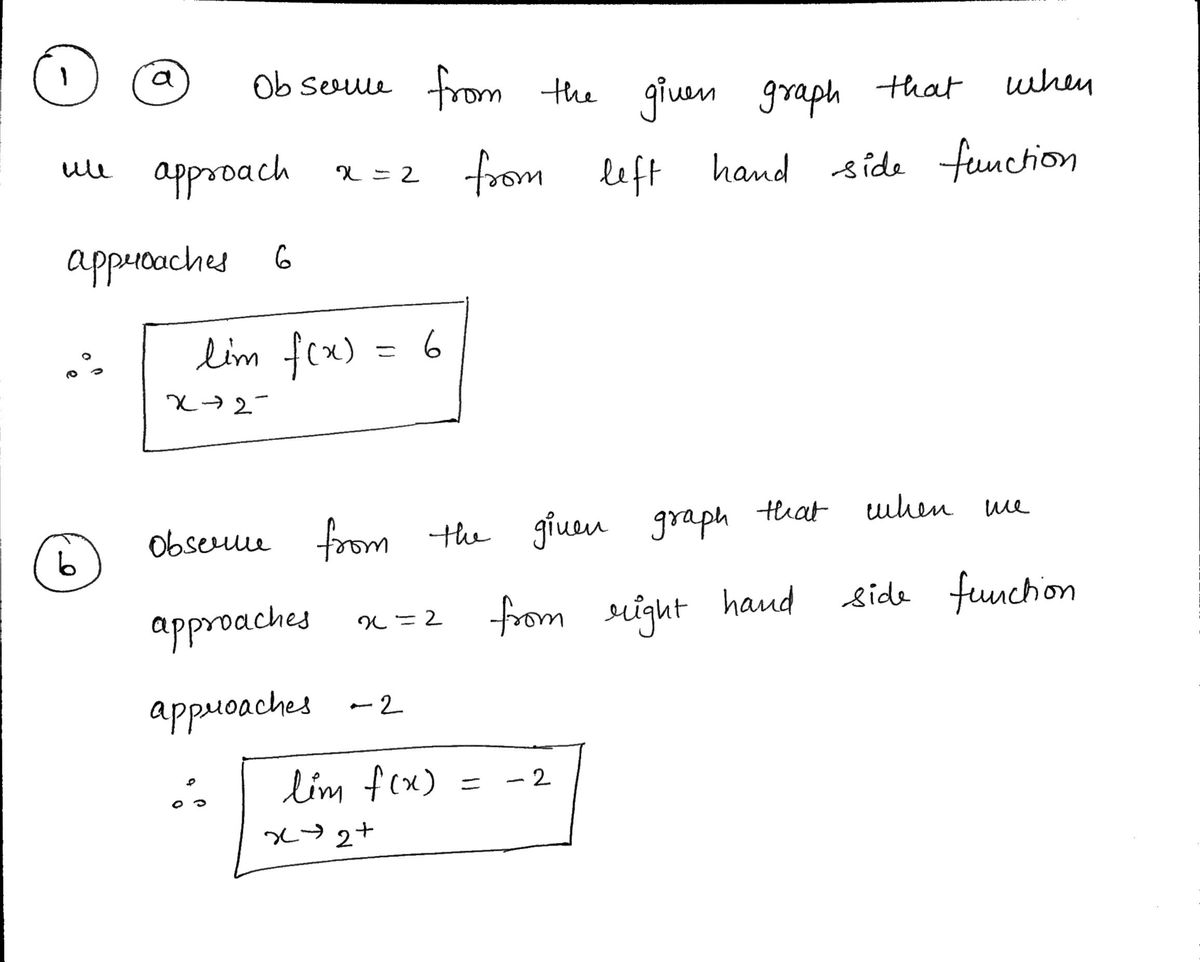1. Consider the given piecewise function f(x), find the limits at the given values. State if the limit does not exist. lim f(x) : а. x→2- b. lim f(x) : x→2+ 2 C. lim (x) = -3 -2 -1 1 -3
1. Consider the given piecewise function f(x), find the limits at the given values. State if the limit does not exist. lim f(x) : а. x→2- b. lim f(x) : x→2+ 2 C. lim (x) = -3 -2 -1 1 -3
Calculus: Early Transcendentals
8th Edition
ISBN:9781285741550
Author:James Stewart
Publisher:James Stewart
Chapter1: Functions And Models
Section: Chapter Questions
Problem 1RCC: (a) What is a function? What are its domain and range? (b) What is the graph of a function? (c) How...
Related questions
Question

Transcribed Image Text:1. Consider the given piecewise function \( f(x) \), find the limits at the given values. State if the limit does not exist.
a. \(\lim_{{x \to 2^-}} f(x) = \underline{\ \ \ \ \ \ }\)
b. \(\lim_{{x \to 2^+}} f(x) = \underline{\ \ \ \ \ \ }\)
c. \(\lim_{{x \to 2}} f(x) = \underline{\ \ \ \ \ \ }\)
**Graph Description:**
The graph depicts a piecewise function with two linear segments:
- The first segment (depicted in red) is a line with a positive slope. It originates below the y-axis and extends upward to the point \((2, 6)\), where there is an open circle, indicating that the point is not included in the segment.
- The second segment (depicted in blue) is a line with a negative slope. It starts at the point \((2, -2)\) with a closed circle, signifying inclusion, and extends downward and to the right.
This piecewise graph suggests different behavior of \( f(x) \) as \( x \) approaches 2 from the left and from the right.
Expert Solution
Step 1

Step by step
Solved in 2 steps with 2 images

Recommended textbooks for you

Calculus: Early Transcendentals
Calculus
ISBN:
9781285741550
Author:
James Stewart
Publisher:
Cengage Learning

Thomas' Calculus (14th Edition)
Calculus
ISBN:
9780134438986
Author:
Joel R. Hass, Christopher E. Heil, Maurice D. Weir
Publisher:
PEARSON

Calculus: Early Transcendentals (3rd Edition)
Calculus
ISBN:
9780134763644
Author:
William L. Briggs, Lyle Cochran, Bernard Gillett, Eric Schulz
Publisher:
PEARSON

Calculus: Early Transcendentals
Calculus
ISBN:
9781285741550
Author:
James Stewart
Publisher:
Cengage Learning

Thomas' Calculus (14th Edition)
Calculus
ISBN:
9780134438986
Author:
Joel R. Hass, Christopher E. Heil, Maurice D. Weir
Publisher:
PEARSON

Calculus: Early Transcendentals (3rd Edition)
Calculus
ISBN:
9780134763644
Author:
William L. Briggs, Lyle Cochran, Bernard Gillett, Eric Schulz
Publisher:
PEARSON

Calculus: Early Transcendentals
Calculus
ISBN:
9781319050740
Author:
Jon Rogawski, Colin Adams, Robert Franzosa
Publisher:
W. H. Freeman


Calculus: Early Transcendental Functions
Calculus
ISBN:
9781337552516
Author:
Ron Larson, Bruce H. Edwards
Publisher:
Cengage Learning